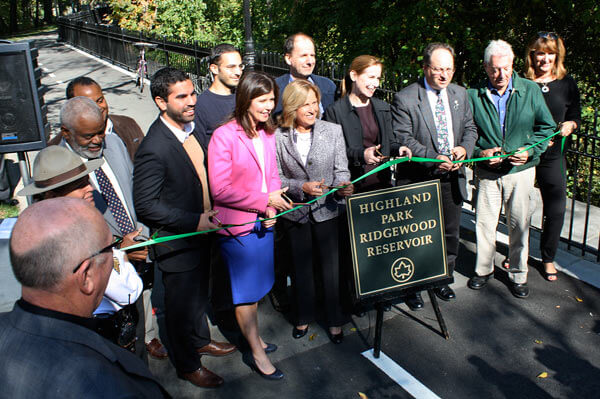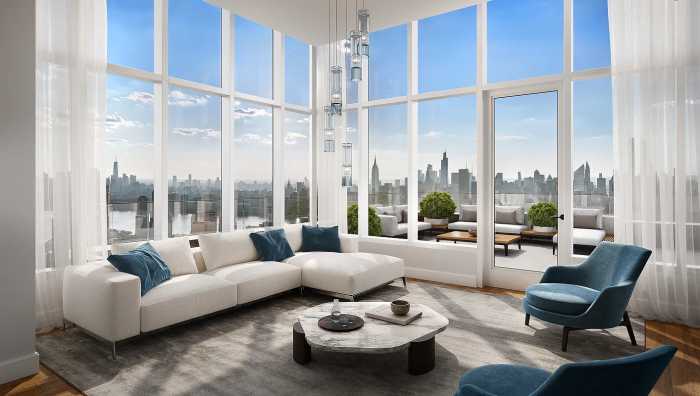By Bianca Fortis
Although the Ridgewood Reservoir reopened last month, the city Parks Department joined community leaders to mark its opening this week with a ceremonial ribbon-cutting.
Nearly half of the path that runs around the reservoir through Highland Park had been closed since July 2011 during Phase 1 of the park improvements, which cost about $6.92 million.
The reservoir, which straddles the Queens and Brooklyn border, operated from 1858-1959 as a water supplier. Later, the second basin was used as backup supply for the two boroughs. Finally, in 1990 the reservoir was decommissioned and later developed into a public park. It has since become something of a nature preserve.
Phase 1 included installing new fencing and lighting, repaving the walking paths around the basin and building a handicap-accessible ramp.
“The Ridgewood Reservoir is like no other area in the city,” City Councilwoman Elizabeth Crowley (D-Middle Village) said at the park Tuesday. “It’s a natural resource for the neighboring community, and I believe that it will draw people from all over the city and extended areas beyond because of the wonderful place that it is.”
She said the changes to the park will help improve the quality of life for people in the area.
Crowley announced that her office will provide some additional funds to pay for signage throughout the park.
Parks Commissioner Veronica White said Highland Park is one of only eight parks throughout the city that was included in PlaNYC, a blueprint released by the Bloomberg administration in 2007 to prepare the city for 1 million more residents by 2030.
She also said the Parks Department currently has $380 million, the highest operating budget it has ever had.
Queens Parks Commissioner Dorothy Lewandowski said Councilman Erik Dilan (D-Brooklyn) has provided $3.5 million to renovate the existing ballfields and lighting at the southern end of the park.
Elena Ortiz, a resident of East New York, said she was actually unhappy with the changes and believed they will contribute to the gentrification that is already encroaching on the surrounding neighborhoods.
A lifelong Highland Park-goer, Ortiz said the upgrades were unnecessary.
“We loved this rustic place,” she said. “If I wanted to go to Prospect Park, I’d go to Prospect Park. If I wanted to go to Central Park, I’d go to Central Park.”
The Parks Department has long-term plans for additional changes to Highland Park and released three concept plans for Phase 2 in July. The city does not currently have any money available for the next phase, however.
The plans vary, but they include ideas such as a boat dock, a rock climbing wall, more ballfields and a “waterworks adventure playground.”
Community leaders have said they want to limit development at the reservoir-turned-wildlife preserve so it can remain as natural as possible.



































